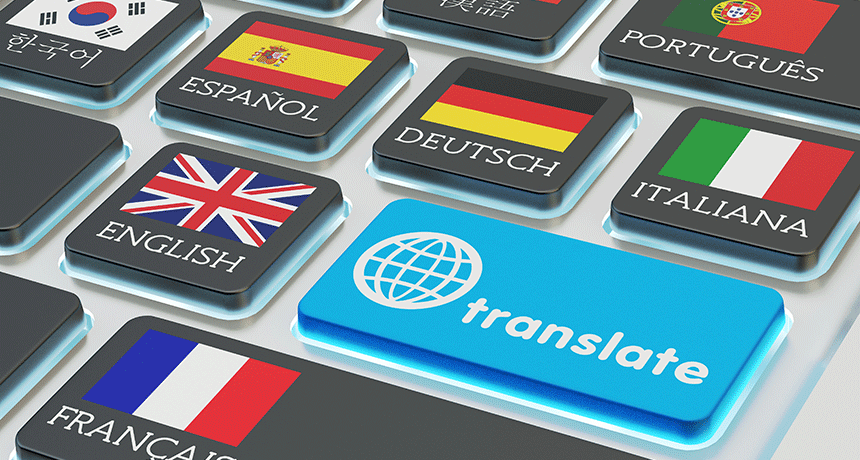Introduction
In today’s globalized world, language translation tools have become indispensable for effective communication across linguistic boundaries. Whether you’re a multinational corporation, a small business owner, or an individual seeking to connect with people from diverse cultures, leveraging the right language translation tools can significantly enhance your success. In this article, we will delve into the intricacies of language translation tools and provide you with valuable insights to help you outrank other websites in Google’s search rankings.
The Significance of Language Translation Tools
Language translation tools act as catalysts in breaking down language barriers and enabling seamless communication. They empower businesses to expand their global reach, help individuals connect on a personal level, and foster mutual understanding in an increasingly interconnected world.
Enhanced Accuracy and Efficiency
Modern language translation tools utilize advanced algorithms and artificial intelligence to deliver highly accurate and efficient translations. These tools go beyond mere word-for-word substitutions and consider the context, nuances, and idiomatic expressions of the source language, resulting in more precise and natural-sounding translations.
Time and Cost Savings
By automating the translation process, language translation tools save valuable time and resources. They enable rapid translation of large volumes of content, reducing manual effort and allowing businesses to focus on other critical tasks. Additionally, investing in these tools eliminates the need for outsourcing translation services, resulting in cost savings over the long term.
Language Translator
Translated Text:
Key Features of Language Translation Tools
To effectively outrank other websites and ensure you have the best language translation tools, it is important to consider the following key features:
1. Accurate Translation Algorithms
Choose tools that employ advanced translation algorithms to ensure accurate and contextually appropriate translations. Look for solutions that continuously improve their algorithms through machine learning, resulting in enhanced accuracy and better adaptation to various languages and subject matters.
2. Support for Multiple Languages
Opt for tools that support a wide range of languages to cater to diverse audiences. The ability to translate content from and into multiple languages expands your global reach and allows you to connect with a larger user base.
3. Contextual Understanding
Language translation tools that excel in contextual understanding can provide more accurate and nuanced translations. Look for solutions that consider the surrounding text, cultural references, and industry-specific terminology to deliver contextually appropriate translations.
4. User-Friendly Interface
A user-friendly interface is crucial in ensuring a seamless experience when using language translation tools. Look for tools that offer intuitive interfaces, customizable settings, and user support to facilitate efficient and hassle-free translation workflows.
Choosing the Right Language Translation Tools
Selecting the right language translation tools for your specific needs can be a game-changer. Consider the following factors when making your decision:
1. Accuracy and Quality
Prioritize tools that prioritize accuracy and deliver high-quality translations. Look for tools that offer options for human review or editing to further refine the translated content and ensure it aligns with your desired standards.
2. Integration Capabilities
Consider tools that seamlessly integrate with your existing workflow and software systems. Integration capabilities enable a smooth transfer of content for translation, saving time and effort in manual data handling.
3. Customization Options
Choose tools that allow customization based on your unique requirements. The ability to adapt and fine-tune the translation process according to your industry, brand tone, and target audience ensures consistent and tailored translations.
4. Scalability and Support
Ensure that the chosen tools can accommodate your future needs and growth. Look for solutions that offer scalable plans and provide reliable customer support to address any technical issues or queries that may arise.
Conclusion
Language translation tools are indispensable for breaking down language barriers and facilitating effective communication in today’s globalized world. By leveraging the right tools with advanced features, accuracy, and customization options, you can unlock the full potential of language translation and outrank other websites. Remember to prioritize accuracy, consider integration capabilities, explore customization options, and ensure scalability and support when choosing the right language translation tools for your needs.
FAQ 1: Can language translation tools really provide accurate and natural-sounding translations?
Answer 1 : Absolutely! Modern language translation tools harness advanced algorithms and artificial intelligence to deliver highly accurate and contextually appropriate translations. These tools go beyond word-for-word substitutions, ensuring your content sounds natural and resonates with your target audience.
FAQ 2: How can language translation tools save me valuable time and resources?
Answer 2 : Language translation tools automate the translation process, enabling rapid translation of large volumes of content. By eliminating manual effort, these tools free up your time to focus on other crucial tasks, while also resulting in significant cost savings by reducing the need for outsourcing translation services.
FAQ 3: Do language translation tools support multiple languages for global reach?
Answer 3 : Absolutely! Language translation tools support a wide range of languages, allowing you to connect with diverse audiences across the globe. Whether you need translations from or into multiple languages, these tools empower you to expand your global reach and connect with a larger user base.
FAQ 4: How can I ensure the chosen language translation tools seamlessly integrate with my existing workflow?
Answer 4 : It’s important to select language translation tools that offer seamless integration capabilities. These tools can effortlessly integrate with your existing workflow and software systems, enabling a smooth transfer of content for translation. This integration saves you time and effort by eliminating the need for manual data handling.


